IZABELLA TABAROVSKY
Soviet Jews stood up to anti-Zionism once before. Now they are helping the younger generation of American Jews—including their own children—fight back against a wave of defamation and hate, while mainstream Jewish organizations wilt.
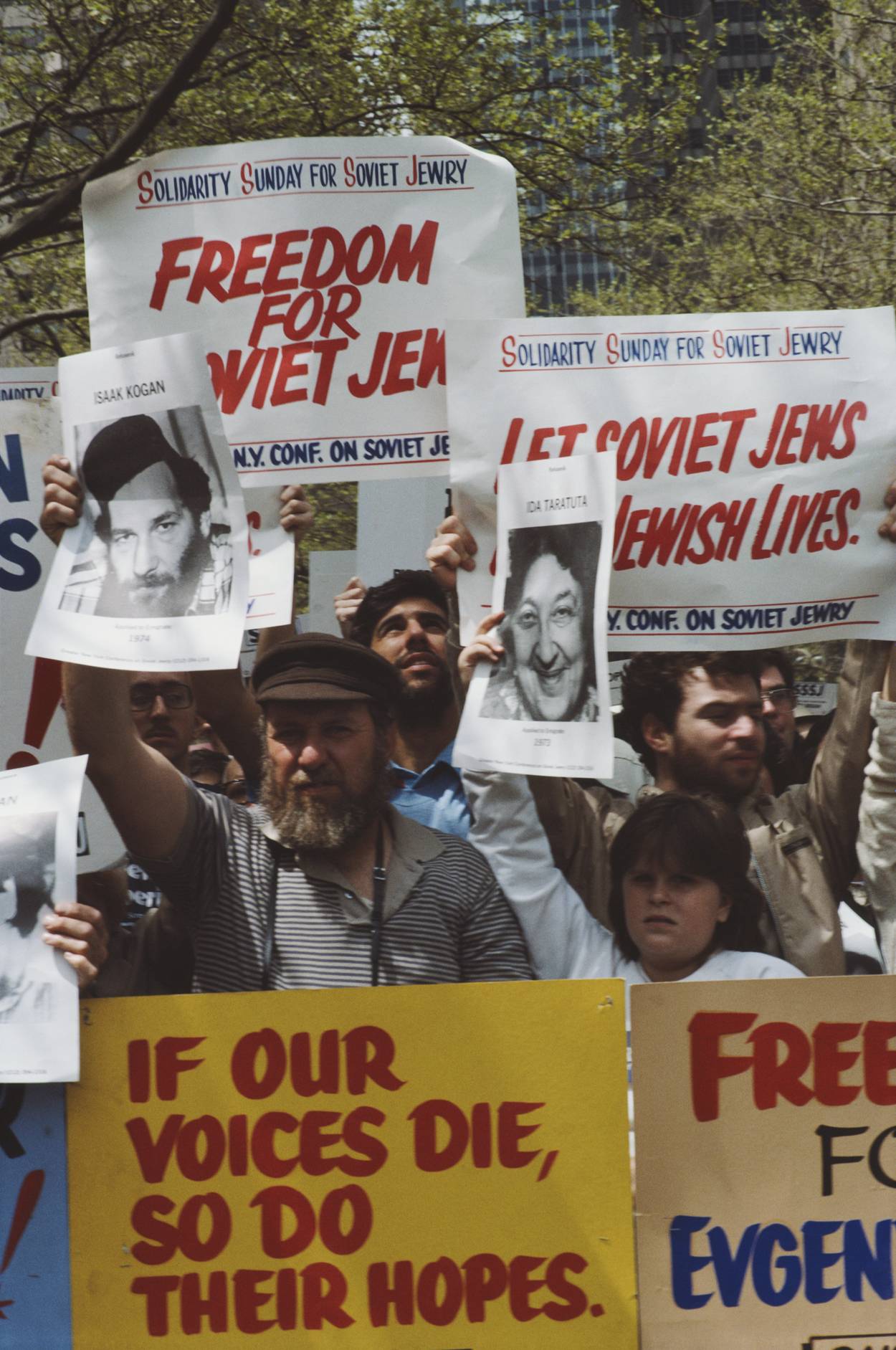 Protestors demonstrating for the rights of Jews in the Soviet Union, on a ‘Solidarity Sunday For Soviet Jewry’, New York City, 6th May 1984.BARBARA ALPER/GETTY IMAGES
Protestors demonstrating for the rights of Jews in the Soviet Union, on a ‘Solidarity Sunday For Soviet Jewry’, New York City, 6th May 1984.BARBARA ALPER/GETTY IMAGES
At a recent United Against Terrorism rally in Beverly Hills, Jennifer Karlan, 17, spoke passionately about why American Jews should stand for Israel. With remarkable confidence, she talked about a new form of antisemitism facing American Jews: “Today, they no longer say they hate the Jew; today they say they hate Zionists. Today they no longer say they hate the Jewish people; they say they hate the Zionist entity. But the hate is the same.” Some 2,000 people had gathered for the rally. Karlan drew cheers as she insisted that Jewish identity and Israel are deeply interconnected: “Israel is not just the name of the land; it is the name of our people. We are the people of Israel, each and every one of us: Am Yisrael Chai.”
Karlan is a graduate of Club Z, a Zionist club for teens and quite possibly the most important American Jewish organization you’ve never heard of. Club Z was founded four years ago by Masha Merkulova, a Soviet Jewish immigrant from Minsk. Along with a handful of other organizations that Russian-speaking American Jews have started over the past few years, it is changing the conversation about Jewish identity, Jewish peoplehood, Zionism, and Israel. Disappointed with the way the United States’ organized Jewish community has treated these issues, and alarmed by the growing embrace of politically weaponized Zionophobia—the form of antisemitism that they know so well from their lives in the Soviet Union—these immigrants are taking matters into their own hands.
The recent Hamas-Israel confrontation unleashed an antisemitic onslaught on social media and in the streets of U.S. cities of a kind that American Jews had never seen before. It wasn’t just the intensity of the hate that was shocking—it was also its source and nature. Suddenly, violent antisemitism was coming at American Jews from the left. Suddenly, it was progressive politicians who were fanning the flames of antisemitism, while the Democratic Party—the political home of most American Jews—looked the other way. Nothing in American Jews’ background or system of beliefs had prepared them for this moment, and many did not seem to know how to respond.
In that moment of crisis, only a few individuals and groups stood out as they fearlessly fought hate and propaganda. They did not log off their social media accounts. They showed no signs of confusion, and they most certainly were not demoralized. They simply stood up and joined the battle against what they perceived as an assault not only Israel but on who they were as Jews.
That ex-Soviet Jews projected a more confident and resilient Jewish identity in the midst of this crisis than many native-born American Jews is a fact that is both fascinating and significant. In the three decades since Soviet Jews arrived in the United States, they proved largely impervious to American Jewry’s attempts to inculcate their sense of what it meant to be Jewish. Having never bought into the idea that religion was central to Jewish identity, they stayed away from synagogues. The American tikkun olam perspective, which demanded that Jews put the world’s priorities ahead of their own, struck them as the height of folly. And they certainly did not buy into the notion that the far right had a monopoly on antisemitism.
During the 11-day crisis in May, it was Russian-speaking American Jews who rose to the occasion, exhibiting a sense of Jewish peoplehood, solidarity, and pride that seemed to evade many other American Jews. Neither shaken nor insecure—and, most important, not surprised—they had no trouble calling out fabrications and slander. What did these immigrants know that the native-born American Jews didn’t?
Quite a bit, it turns out.
Merkulova, Club Z’s founder and CEO, came to the United States in 1992 when she was 18 years old. She put herself through school and spent some 15 years working as a registered nurse. A decade ago, she found herself volunteering with a Bay Area nonprofit that awarded small funds to pro-Israel student organizations—a position that often took her to campuses of prestigious Northern California universities. It was there that she first began to meet Jewish students who told her about being stumped by anti-Israel rhetoric on campus.
“Many of these kids had finished Jewish private schools. They were kids who wanted to do something pro-Israel, who had been to Israel, who had been to Jewish summer camps and were part of Jewish groups,” Merkulova told me recently. “Their parents had given them everything Jewish that they could.” Yet they knew nothing about the history of Israel. They knew even less about the history of the Israeli-Palestinian conflict. They had no idea what their anti-Israel professors and classmates were talking about. “A Jewish student would say, ‘Israel invented the cherry tomato,’ and he’d hear back, ‘Asshole, you planted your cherry tomato on my land.’ So the conversation was very short.”
Soon she began to encounter Jewish kids turned anti-Israel activists. She began to read their blogs—the pre-social media social media of 10 years back. Here’s how she characterized the content of their rants and confessionals: “I thought I knew everything, I went to Israel, I planted trees with the JNF, and now I learn that it was stolen land. What horror, nobody told us anything.” When IfNotNow burst onto the scene in 2014, Merkulova might have been the only American Jewish parent who was not surprised: She had been reading that stuff for years.
Her Soviet Jewish parental instincts now fully engaged, Merkulova began to wonder how to prepare her teenage son for the antisemitic reality he was going to face on campus. She knew that there was something that the Jewish educators were getting terribly wrong. She began to ask herself, “Why can’t we tell the kids that there is a problem, that it is complex, and that it doesn’t have an easy solution—but let’s at least begin by naming what the issue is.”
She started to look for resources and quickly realized that she was on her own. Synagogues and Hebrew schools proved useless, as did her son’s Jewish day school. She dismissed the occasional three-hour workshop on the conflict that she saw advertised here and there because “what can you understand in three hours? Only that there are endless shades of gray.”
Eventually, she came across a seven-lesson curriculum from the now-defunct David Project, which focused on the links between Israel and Jewish identity. She liked that framing. She thought, “If I can help women birth children and teach them how to take care of them, I can teach seven lessons about Israel and Jewish identity to a bunch of teenagers.”
She began to invite teens from her son’s eighth grade to her home once a month after Shabbat. “I would cook them dinner, and then we would study together,” she said. “We would study what is Israel, what is Zionism, and why we need all of this.” Soon the kids asked for more. They began to meet every other week, then every Saturday night. “Somehow these teens understood that this was something special, something cool. We were learning amazing things. The more you learn about Israel, the more in awe you become, even with the warts, even with the problems,” recalled Merkulova. Four years ago, she quit nursing and founded Club Z.
Today Club Z has five chapters (Bay Area, Los Angeles, San Diego, New York, and Charlotte, North Carolina), plus an online track. The community includes 300 current students and recent graduates. There are weekly study sessions, hangouts, retreats, and the annual conference titled “Zionism: A Love Story,” which everyone I talked to raved about.
Perhaps the best way to understand what Club Z is about is to hear what its students and graduates say about it. Teens typically join Club Z in the eighth grade and graduate in the 11th grade. At a recent Bay Area chapter graduation, Natalie Arbatman talked about arriving at Club Z as a shy and inarticulate teenager who had no idea what it meant to be a Jew. She is graduating having spoken in front of hundreds at a rally, defended herself online and at school, and pushed back on the opinions of her teachers and classmates. She is leaving knowing that “I carry on my shoulders a memory, a history, and a tradition that I couldn’t trade for anything in the world” and that she is “part of a people” that she feels deeply proud of.
When watching videos and interactions, you’re struck most by how preternaturally poised, articulate, and thoughtful Club Z teens are when talking about Israel, Zionism, and Jewish identity. You can’t help feeling that you are looking at the future leaders of the American Jewish community, or at least part of it.
According to Ilan Eisenberg, a recent Bay Area graduate who will be starting at Yale University in the fall, the central aspect of Club Z’s curriculum is the exploration of Jewish identity. To be sure, there are social events to celebrate Jewish identity and discussions about how to defend it from antisemitism in the broader Jewish community, he told me. “And yet, there is nobody who wants to ask the question of why. Why are we doing this? What is it that we have to maintain? What is it that we are fighting for when we are fighting against antisemitism?”
He notes that the same people who downplay the exploration of Jewish identity will downplay Zionism. For many, Zionism is “about fighting BDS, or it’s about ending antisemitism or protecting Jews on college campuses and on social media.” But there is more to Zionism than that, he says: “Zionism isn’t reactionary. Zionism is an expression of our purpose as a people.”
Merkulova confirms that providing the kids with deep knowledge rather than talking points is one of Club Z’s goals: “We don’t have memes, we have long explanations.” Teaching critical thinking is an important part of the curriculum. So is the cultivation of leadership. But the biggest gift Club Z gives its teens, says Merkulova, is confidence: You may have all the knowledge in the world, but if you don’t have confidence, you won’t stand up in class, declare yourself a Zionist, or challenge your teacher. Students learn to debate, and they work with a public speaking coach.
Teens also benefit from being part of a network that stays with them even after they graduate. The network proved its value in spades during the recent Hamas-Israel confrontation. It was a hard time. Many kids were losing friends. “Remember how adults were saying that the silence was deafening?” asked Merkulova. “Imagine what it was like for teenagers. Their social life is everything—it’s all they have.” Teens began to use the Club Z national group chat to share screenshots of what their friends were posting, asking for advice on how to respond. One of the most revealing moments came when one member asked a friend why he was posting hateful stuff. He said, “Bro, I don’t know what I’m posting, but I know that if I don’t post, I’ll look like I don’t care. I have to post.”
American Jews often perceive the Soviet Jewry story as one of silence and oppression. But that perception is hardly complete. Resistance and dissidence are also part of the Soviet Jewish DNA. From Natan Sharansky’s insistence on living in truth, to the eighteen Georgian Jews’ dramatic manifesto, which inspired Golda Meir and Jews all over the world to fight for them, to the Leningrad hijackers’ attempt to take over a plane and fly it to freedom—these stories are part and parcel of the Soviet Jewish identity, too.
For many Soviet Jews, the trigger that led them to embark on a journey of Jewish self-exploration was their early experiences of antisemitism. As they grappled with the question of what exactly made them different from others, they began to seek out books on Jewish and Israeli history and to join underground study groups. The inescapable conclusion that they came to was that they were part of a people that was indeed different from those around them. One of the most frequent arguments that Soviet Zionist activists made to the authorities as they demanded the right to emigrate was that just as Ukraine was the national home of Ukrainians and Russia was the national home of Russians, Israel was the national home of the Jews. They simply wanted to go home.
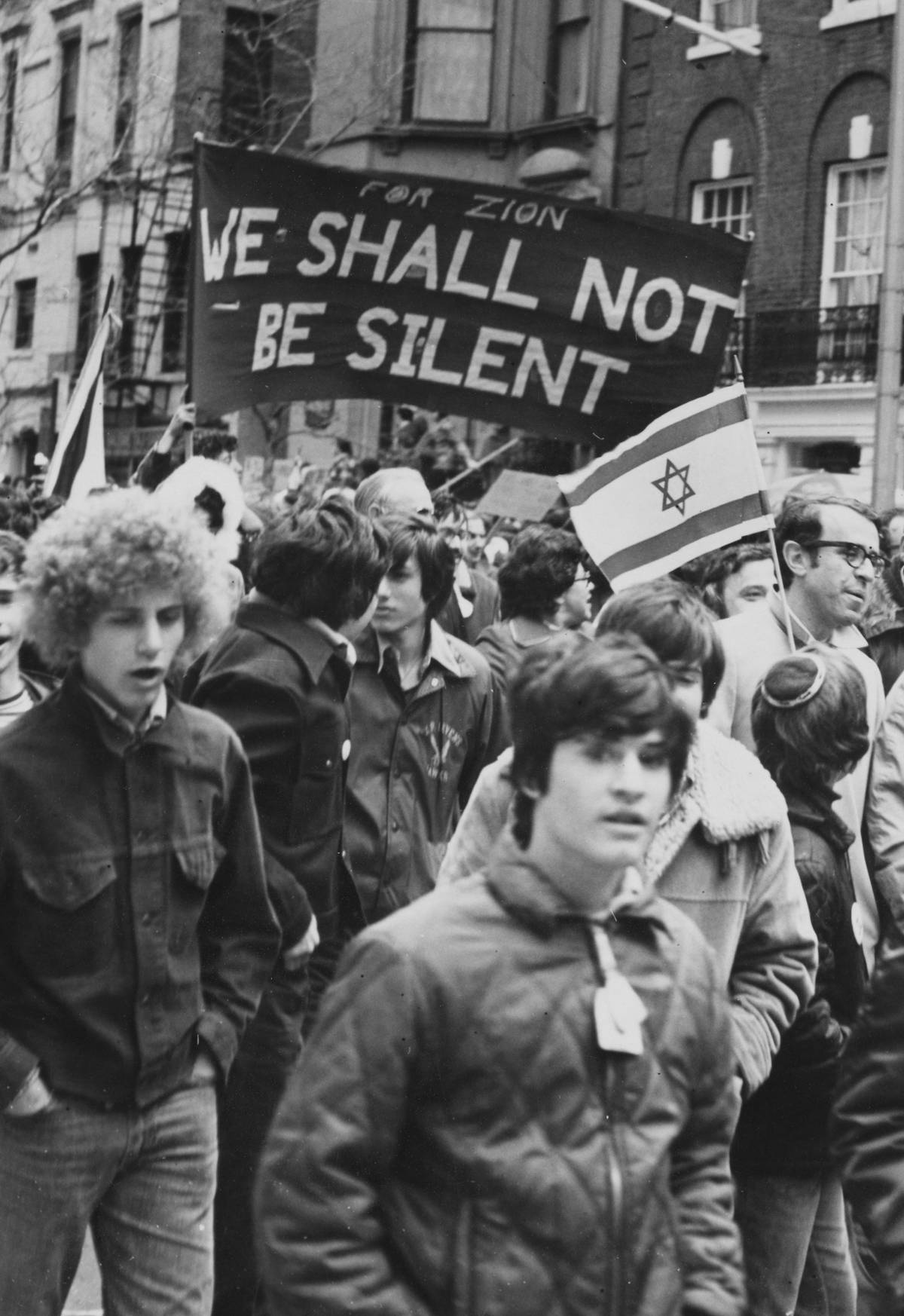 Solidarity Sunday for Soviet Jewry demonstration in protest at the Soviet Union’s treatment of Jewish people, in New York City, New York, 13th April 1975.PETER KEEGAN/KEYSTONE/HULTON ARCHIVE/GETTY IMAGES
Solidarity Sunday for Soviet Jewry demonstration in protest at the Soviet Union’s treatment of Jewish people, in New York City, New York, 13th April 1975.PETER KEEGAN/KEYSTONE/HULTON ARCHIVE/GETTY IMAGES
Their experience of antisemitism also gave Soviet Jews insights into the kind of left-wing antisemitism that comes under the rubric of “anti-Zionism” and Israel demonization that American Jews no longer have the luxury of ignoring. One of the deadliest accusations used in Stalin’s antisemitic purges was that its targets were Zionists (aka “bourgeois-nationalists”), not “Jews.” In a 1968 essay titled “Why I Am a Zionist,” which was widely circulated in samizdat, Boris Kochubievsky, one of the early refuseniks, explained how the anti-Zionism that he experienced at the hands of the Soviet state was no different from the antisemitism of Adolf Hitler, which killed his relatives at Babi Yar. It was anti-Zionism, he wrote, that was turning largely atheist and assimilated Soviet Jews like himself into Jews who were passionate and proud of their Jewish identity.
“I had to fight antisemites as a 12-, 13-, 14-year-old. I heard antisemitic stuff from an early age: ‘You Zionist garbage,’ ‘go back to your Israel,’” says Alex Leybengrub, who immigrated to the United States from Kyiv, Ukraine, and lives in Brooklyn with his family. Leybengrub’s father and grandfather had strong Zionist views: “There was always talk about Israel at home.”
Simona Kurgan, from Los Angeles, grew up in Riga, Latvia—one of the key centers of the Soviet Jewish national movement. Her parents applied to emigrate in the 1970s, were denied, lost their jobs, and spent 10 years in the refusal limbo. Simona grew up learning about Zionism, Israel, and Jewish identity in the underground study circles that the Zionist movement’s activists had set up to help their fellow Jews deepen their sense of themselves as Jews. Together with other Jewish kids, Kurgan visited Holocaust mass graves in the Rumbula forest and helped the aging and impoverished Jan Lipke, a Righteous Among the Nations who had saved scores of Latvian Jews. Being part of the movement gave Kurgan a sense of meaning. “I think it’s important to have a cause,” she told me.
It is this legacy that makes Leybengrub and Kurgan feel so proud of their Club Z sons learning to fight for themselves, speaking out, and educating others. During the May crisis, a teacher at Leybengrub’s son Daniel’s progressive Manhattan private school emailed the students, announcing that a Jewish student would be making a special unscheduled presentation connecting Zionism with white supremacy and colonialism. Daniel objected. In a polite and well-argued letter, he offered to complement the presentation by inviting a speaker who would provide a different point of view. When the teacher rejected his offer, Alex wrote a letter of his own to the principal. He told him that he used to hear the kind of language that the teacher used in the announcement back in the USSR. Today, like in Soviet times, Jews around the world are being beaten up “for the ‘crime’ of Zionism and the slur that ‘Zionism=racism,’” he wrote. “Do you want to be responsible for the Jewish students in your class being heckled as racist?”
Kurgan, for her part, wrote to the CEO of the company she works for (who is Jewish) and asked why the company didn’t issue a statement condemning antisemitism. She did not expect a political statement about Israel, she wrote, “but you made a statement about the BLM. You made a statement about anti-Asian hate. What about the Jews?” She acknowledges that writing a letter like this may have repercussions for her job. But she felt that it would be “extremely hypocritical” of her to be silent when she was trying to teach her kids to be brave.
This kind of thinking is precisely what Merkulova hopes will take root among American Jewish parents. “Courage is the rarest virtue. But it’s a muscle. It’s a muscle! Our kids need us to show them what it looks like.” She insists that every Jewish adult attend at least one anti-Israel rally to experience the hate “on their skin,” and has little patience for those who refuse: “This is what your kid will face every day. Your kid doesn’t have a choice.”
To be sure, Russian-speaking American Jews are not a monolith, and not everyone is engaged in the same issues to the same degree: Members of the second generation in particular tend to ground their Jewish identity in the same concepts as other American Jews and are just as likely to end up in the anti-Israel activist camp as their peers. But as American Jews increasingly awaken to the meaning of anti-Zionism, Russian-speaking Jews who remain rooted in their own family histories and cultural experiences are proving to be an invaluable resource for the American Jewish community as a whole. They seem to be holding a piece of the Jewish identity puzzle that American Jews have lost.
Because of Russian-speaking Jews’ unique perspective, Merkulova hopes to see more of them take on larger public leadership roles. In fact, many do. Seeing parallels to her family’s Soviet experience, Elina Kaplan founded a nonprofit to fight against California’s divisive, tribalist, and hierarchical ethnic studies curriculum, which she says, “invites anti-Zionism into the classroom,” and is “the greatest threat facing American Jews today.” Inna Vernikov, an immigrant from Chernivtsi, Ukraine, took up leadership of the Americans Against Antisemitism’s millennial-women-focused Women’s Committee. She is now running for the New York City Council. She criticizes Democrats’ failure to confront their colleagues’ antisemitic rhetoric and argues that the party promotes “exactly what we ran from—a place where speech was censored, where we were not allowed to practice religion, where we didn’t have freedom or economic opportunity.”
Among the local organizations that co-sponsored the pro-Israel rally in Beverly Hills was another group founded by a descendant of Soviet Jewish immigrants: Students Supporting Israel (SSI), which today is the largest pro-Israel grassroots student movement in North America. But when its founder and CEO Ilan Sinelnikov, 28, first enrolled at the University of Minnesota in 2012, he had no idea why such an organization might be necessary in the United States.
Sinelnikov, who was born in Israel to Soviet immigrants and thinks of himself primarily as an Israeli, can recite his family’s Soviet Jewish history by heart. Fourteen of his family members were murdered at Babi Yar. The youngest one was several months old, and the oldest was 77 years old. One family member found himself among the group of Soviet POWs who the Germans tasked with burning bodies in the ravine in advance of their retreat. He was one of the few who managed to escape and survive to tell the tale. When another member returned to Kyiv from evacuation, the neighbor who took over her apartment kicked her out with antisemitic curses. His grandfather Nachum applied to emigrate in the 1970s and was refused. He lost his job, and his daughter was kicked out of high school. When they came to Israel in 1989, he joined Sharansky’s political party Yisrael BaAliyah, which fought for the rights of Soviet immigrants in Israel. In 2008, Sinelnikov’s father found a job in Minneapolis, and the family moved there.
In March of 2012, Sinelnikov, a freshman at the UMN, encountered his first Israel Apartheid Week. The lies and demonization shocked him. But when he approached local Jewish organizations with an idea to fight this, he found them in a “we shouldn’t do anything” frame of mind: “We don’t want to add fuel to the fire. We don’t want to escalate the situation on campus even more,” he remembers them telling him. For Sinelnikov, it did not compute: “What do you mean, escalate?” he asked, incredulous. “The situation is already bad. There is nowhere else to escalate!”
The tipping point came when he and his sister Valeria, then a senior at the UMN, saw a Students for Justice in Palestine poster that pictured U.S. dollars pouring into a funnel with a Star of David on it that opened into a blood-filled vat. In the vat, Palestinian children swam and drowned. “That was not even anti-Israel; that was straight-out antisemitic,” Sinelnikov said. That is when he and his sister decided to stop listening to others in the Jewish community and founded the SSI. At their first meeting, there were seven people. Together they watched Crossing the Line: The Intifada Comes to Campus, a film that explains how anti-Zionism crosses into Jew-hatred.
Since its founding, SSI has operated on 140 campuses and counts 1,000 active members and alums. What makes SSI unique among other campus pro-Israel initiatives, Sinelnikov explains, is that it is an official campus club—like College Democrats or College Republicans or, for that matter, SJP—rather than an outside Jewish organization with a presence on campus. This has multiple advantages—including the fact that it can run its candidates for student government. The first time SSI did this (“we ran a very aggressive campaign,” says Sinelnikov), 10% of the student government were SSI members. Buoyed by this success, they set themselves the next goal: to pass a pro-Israel bill in the government. They succeeded again. It was a landmark win, and it put SSI on the national map. Since then, 24 such resolutions have been passed by SSI chapters across the country.
recommended by: Leon Rozenbaum
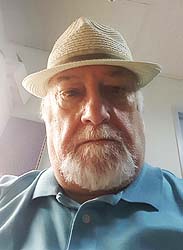 Sinelnikov describes SSI’s objectives as being visible, staying on the offensive, and controlling the narrative. “We don’t want to let SJP teach us what Zionism and antisemitism is,” he says. The group empowers its members to publicly challenge the demonization of Israel and Jew-hate wherever the opportunity presents itself. When Malaysian Prime Minister Mahathir Mohamad spoke at Columbia University in 2019, it was an SSI student who challenged him publicly on his Holocaust denial.
Sinelnikov describes SSI’s objectives as being visible, staying on the offensive, and controlling the narrative. “We don’t want to let SJP teach us what Zionism and antisemitism is,” he says. The group empowers its members to publicly challenge the demonization of Israel and Jew-hate wherever the opportunity presents itself. When Malaysian Prime Minister Mahathir Mohamad spoke at Columbia University in 2019, it was an SSI student who challenged him publicly on his Holocaust denial.
SSI attracts students from all walks of life—including Christians and Muslims. But Sinelnikov notes a trend in leadership: Along with Israeli Jews, Russian-speaking Jews often become particularly active members and chapter leaders. I spoke to one of them—Naena Drazman, 19, who is the president of the University of Toronto’s SSI chapter.
Drazman comes from a family that immigrated to Canada from Soviet Ukraine. Her story traces familiar lines. Nineteen members of her family were murdered in the Holocaust in Dnipropetrovsk (today’s Dnipro) and Kharkiv. Some were shot in the shooting pits, others hanged on their own balconies. Soviet antisemitism followed. She remembers “being so outraged” at the stories of how her family had been targeted, “how it was so hard to even leave the country to go to Israel.” Her mother had to change her last name to enter a university. “It just makes my blood boil,” said Drazman.
Under her leadership, the chapter has grown from two to 22 members. Like other SSI members, she sees her priority as making sure that U of T students have access to a different point of view than the one that dominates on campus. During a recent Israel Apartheid Week, they set up a mock bomb shelter on campus’s main street. “We were like, you know what? You want to talk about apartheid? You want to share your narrative of what’s happening? We’ll show you our narrative that Israelis pretty much live in bomb shelters, that every apartment building has to have a bomb shelter,” said Drazman. She rejects the conventional wisdom that says that Jews should be quiet in the face of antisemitism. Drawing on her family’s experience, she says, “I just think it doesn’t work anymore. It’s not working for us, and we need to be the ones. No one else is going to stand up for ourselves and our community.”
Like everyone else I spoke with, Drazman noted that it’s time for American and Canadian Jews to acknowledge that anti-Zionism is antisemitism. “Jews are being attacked in the streets for looking Jewish. It has nothing to do with whether you support Israel or have family in Israel,” she says. “We have been screaming about this for years,” said Merkulova. She hopes that the May events will help American Jews to finally get this point: “In the streets of London, they didn’t yell, ‘Fuck the Zionists and rape their daughters.’ They yelled, ‘Fuck the Jews and rape their daughters.’”
Izabella Tabarovsky is a contributing writer at Tablet and a researcher with the Kennan Institute at the Wilson Center focusing on the politics of historical memory in the former Soviet Union. Follow her at @IzaTabaro.
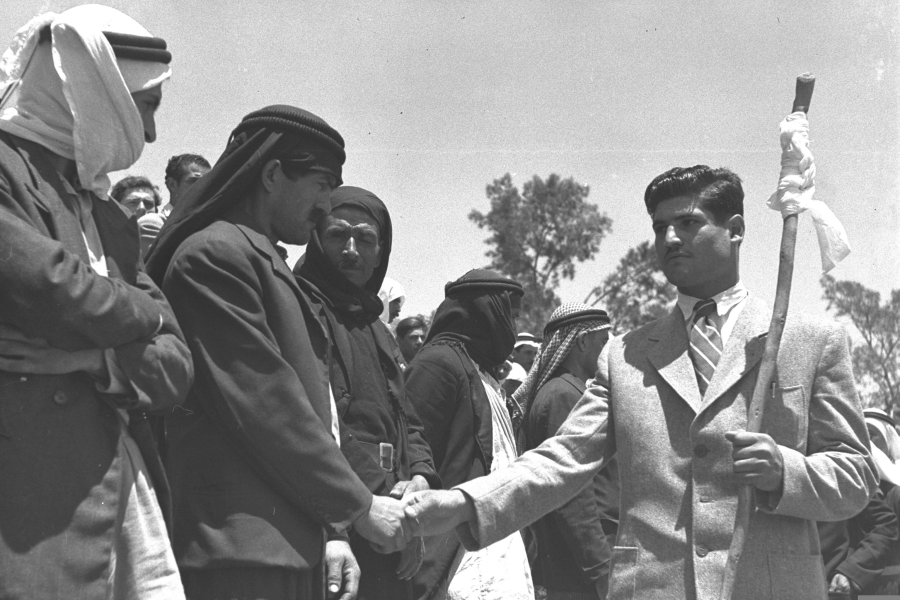 Arabska ceremonia przebaczenia „Sulha” w wiosce Druzów Julis/ fot. PINN HANS (GPO)
Arabska ceremonia przebaczenia „Sulha” w wiosce Druzów Julis/ fot. PINN HANS (GPO) Mojżesz unieważnia przysięgę [komentarz do parszy Ki tisa]
Mojżesz unieważnia przysięgę [komentarz do parszy Ki tisa]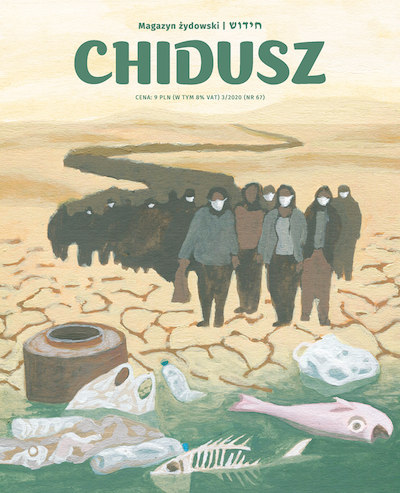 Według Mędrców pierwotnym aktem unieważnienia danej przysięgi, który jest genezą święta Jom Kipur, była właśnie opisana wyżej sytuacja. Mędrcy uważali, że werset „I użalił się Wiekuisty nad złem, o którem mówił, że sprowadzi je na lud Swój” (Szemot 32:14) oznacza, że Bóg wyraził żal z powodu złożonej przysięgi – a to jest wstępnym warunkiem jej anulowania.
Według Mędrców pierwotnym aktem unieważnienia danej przysięgi, który jest genezą święta Jom Kipur, była właśnie opisana wyżej sytuacja. Mędrcy uważali, że werset „I użalił się Wiekuisty nad złem, o którem mówił, że sprowadzi je na lud Swój” (Szemot 32:14) oznacza, że Bóg wyraził żal z powodu złożonej przysięgi – a to jest wstępnym warunkiem jej anulowania.





